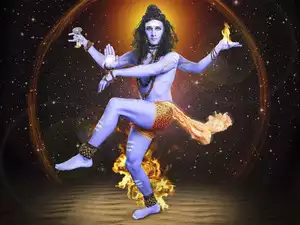Navratri Festival: 5 Reasons Why Navratri is a Joyous Celebration and 3 Challenges You Might Fac

Navratri Festival
Navratri is quite possibly the most venerated celebration in Hindu culture, celebrated with extraordinary enthusiasm across India and among Indian people groups around the world. Crossing nine evenings, Navratri is committed to the love of goddess Durga and her different structures. This celebration not only addresses the victory of good over evil but also encourages a feeling of solidarity and otherworldliness among lovers. Every day is pervaded with novel customs, energetic tones, and the embodiment of the heavenly female, making it a really improving encounter for all.
The Meaning of Navratri
Navratri, which means “nine evenings,” is seen during the lunar month of Ashvin, commonly falling in September or October. It connotes the beginning of pre-winter and the gathering season, bringing a feeling of restoration and appreciation. The celebration is established in old customs, praising the force of the goddess as a power of creation and obliteration.
Every day Navratri respects an alternate type of goddess Durga, permitting enthusiasts to interface profoundly with her different perspectives. This otherworldly excursion urges people to consider their lives, defeat pessimism, and embrace inspiration, strength, and flexibility. It is a period for reestablishment, filtration, and strengthening.
Day-wise Tones and Goddesses
Every day of Navratri is set apart by unambiguous varieties and goddesses, each representing particular credits. Here is a glance at the varieties and the comparing goddesses for every day:
Day 1: Pratipada (Red) – Maa Shailputri
The principal day observes Maa Shailputri, representing strength and steadiness. The energetic variety red addresses energy, enthusiasm, and the savage idea of the goddess.
Day 2: Dwitiya (Illustrious Blue) – Maa Brahmacharini
On the subsequent day, enthusiasts honor Maa Brahmacharini, the goddess of information and astuteness. Imperial blue reflects smoothness, dedication, and quietness, encapsulating her serene soul.
Day 3: Tritiya (Yellow) – Maa Chandraghanta
The third day is devoted to Maa Chandraghanta, addressing excellence and fortitude. The merry variety yellow means delight, energy, and illumination.
Day 4: Chaturthi (Green) – Maa Kushmanda
On the fourth day, Maa Kushmanda is revered, representing overflow and imagination. Green typifies nature, development, and success.
Day 5: Panchami (Dark) – Maa Skandamata
The fifth day praises Maa Skandamata, the mother of Ruler Kartikeya. The impartial variety dark addresses equilibrium, serenity, and security.
Day 6: Shashthi (Orange) – Maa Katyayani
The 6th day observes Maa Katyayani, known for her solidarity and bravery. Orange reflects excitement, energy, and the champion soul of the goddess.
Day 7: Saptami (White) – Maa Kalaratri
On the seventh day, fans respect Maa Kalaratri, who exemplifies assurance. White represents virtue, harmony, and serenity.
Day 8: Ashtami (Pink) – Maa Mahagauri
The eighth day is committed to Maa Mahagauri, addressing virtue and insight. The delicate variety of pink encapsulates love, empathy, and sustenance.
Day 9: Navami (Purple) – Maa Siddhidatri
The last day comes full circle with the love of Maa Siddhidatri, who awards wishes and satisfies wants. Purple implies otherworldliness, extravagance, and insight.
Observing Navratri
Navratri is a celebration of euphoria, dedication, and local area soul. Customary moves, like Garba and Dandiya, unite individuals in the festival, making an environment loaded up with cadence and satisfaction. Sanctuaries are embellished with blossoms, lights, and adornments, improving the bubbly climate.
Delectable veggie lover dishes are ready, featuring the significance of fasting and sanitization during this period. Families take part in customs, narrating, and sharing encounters, passing down customs that fortify their social roots.
End
Navratri is a strong festival of otherworldliness, local area, and the heavenly female. Understanding the meaning of every day and the varieties related to the goddesses improves our experience of this dynamic celebration. As we embrace the soul of Navratri, let us draw motivation from the strength, flexibility, and beauty of the heavenly female, praising the power inside ourselves and the solidarity in our networks.
Source: Economic Times








